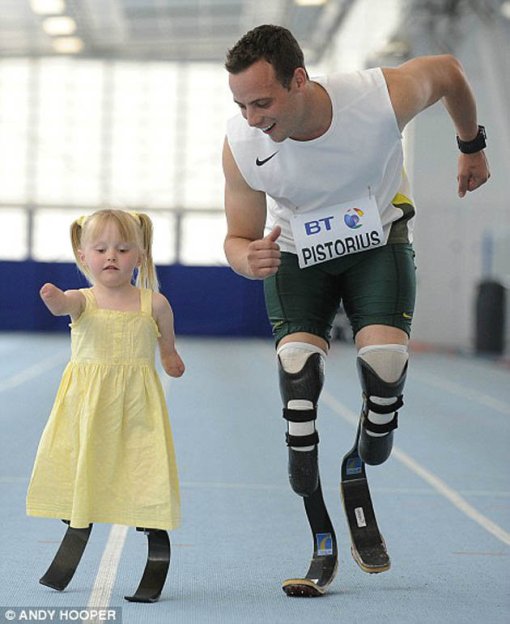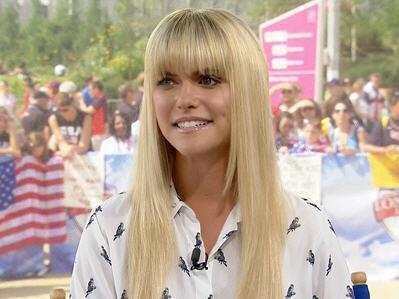
I have officially made my first mold, cast, and device!! Let me tell you, it was SO much harder than I thought it was going to be! We started our project last week with casting a classmate - we used plaster rolls to cast their knee area...coming from a girl who has never worked with plaster and especially not been responsible for rolling it wet onto someone else's body...it is a messy messy job. I came home covered head to toe in plaster and despite a long hot shower, I kept finding it in random places - my hair, in the grooves of my watch...my poor sneakers will never look the same.
After taking the plaster mold, we cut it off our patient and then filled it with plaster to create a plaster cast. I have really got to keep up with my arm weights because I was lucky enough to have a small girl as my patient and trying to lug this big chunk of plaster around with a metal rod sticking out of it is not the easiest thing in the world.
The hardest part of this whole process for me was modifying the plaster cast. The trick is to find all of the anatomical landmarks and account for them, making room for the patella and and bony prominences that a person might have. There is a lot of shaving down of the plaster and sanding it and smoothing it and adding extra plaster when you accidentally take off too much (I became really good at adding plaster). It is amazing how repetitiveness in this industry gives you the ease to do these things without thinking. People were telling me to take off 1/8 of an inch on one side and I kept thinking, how on earth when you are sanding this down do you know how much 1/8 of an inch is!? I am confident I will be able to have that innate knowledge someday...
When all the modifications are done and you are looking at a beautifully smooth plaster leg, you get to take it and cover it with a giant sheet of melted plastic. Fun right? Except for the 350 degree giant sheet of plastic melting in your hands! The fact that this part is pretty time sensitive had me a little stressed, but as it turns out, I am a pro at plastic pulling :) It was definitely nice to feel like I accomplished something quickly and on the first round of trying, it gave me a morale boost for the day. Then we drew trim lines (the area that you want to cut along to give you the shape of your brace) and took a saw and cut the plastic off the cast. Bam! You have what looks like the start of a decent bracing device.
Don't be fooled...I said you have what looks like the start...then begins the grinding. Oh the grinding - I thought in the war of me versus grinding I was going to lose. It was looking fairly grim on the first day. I almost threw my knee brace out the window and headed to the beach. I took a break, came back the next day and at some point turned the corner in the world of grinding and polishing. My brace came out smooth as could be, providing the most comfortable plastic surface you could ever imagine pushing into your flesh.
Next up, the sewing machine. I have never used a sewing machine in my life and now have so much more respect for people who are exceptionally skilled at using them. This whole clutch and pedal and turning the wheel and feed dogs thing...whoa, it is a lot to try and do for a little 8 inch strip of velcro on cotton! I managed to somewhat get the hang of it and sew two successful straps, rivet those to my knee brace and voila - a completed project!!
I had to then fit my patient, modify yet again because the first fit is never the right fit (more grinding, more polishing, adding pads for comfort). It seems so silly, but this piece of plastic with two little straps in the back made me feel so accomplished and so proud. I was just staring at it on my workbench today thinking - okay, I have come so far since last week, I can only imagine what I am going to be creating over the next few months. I am so excited!!
We had to present our projects to the class and to our instructors for a critique - now, I may have had to cast my patient twice, I may have used more plaster than anyone in the class, I may have spent the longest time grinding that thing to perfection and maybe had to throw away a poorly sewn strap, but a patient presentation is where I shine. Standing in front of the room of people and discussing my trials and tribulations in creating this device, explaining what I learned and where I went wrong and what I would change for the next time, I felt comfortable and at ease and was rewarded with the compliment of the program director telling me that it was the most confident presentation of the day. Doctors, patients, people of the O&P industry, watch out, I am going to win you over with my smile and charm and then surprise you with a perfectly made prosthetic device :)





























